Vauxhall Astra Sports Tourer vs VW T-Roc - Differences and prices compared
Costs and Efficiency:
Price and efficiency are often the first things buyers look at. Here it becomes clear which model has the long-term edge – whether at the pump, the plug, or in purchase price.
VW T-Roc has a hardly perceptible advantage in terms of price – it starts at 26400 £, while the Vauxhall Astra Sports Tourer costs 26500 £. That’s a price difference of around 39 £.
Fuel consumption also shows a difference: Vauxhall Astra Sports Tourer manages with 2.30 L and is therefore convincingly more efficient than the VW T-Roc with 5.50 L. The difference is about 3.20 L per 100 km.
Engine and Performance:
Power, torque and acceleration are the classic benchmarks for car enthusiasts – and here, some clear differences start to show.
When it comes to engine power, the Vauxhall Astra Sports Tourer has a clearly perceptible edge – offering 225 HP compared to 150 HP. That’s roughly 75 HP more horsepower.
In acceleration from 0 to 100 km/h, the Vauxhall Astra Sports Tourer is slightly quicker – completing the sprint in 7.60 s, while the VW T-Roc takes 8.90 s. That’s about 1.30 s faster.
In terms of top speed, the Vauxhall Astra Sports Tourer performs slight better – reaching 235 km/h, while the VW T-Roc tops out at 212 km/h. The difference is around 23 km/h.
There’s also a difference in torque: Vauxhall Astra Sports Tourer pulls distinct stronger with 360 Nm compared to 250 Nm. That’s about 110 Nm difference.
Space and Everyday Use:
Beyond pure performance, interior space and usability matter most in daily life. This is where you see which car is more practical and versatile.
Seats: offers more seating capacity – vs .
In curb weight, Vauxhall Astra Sports Tourer is hardly perceptible lighter – 1394 kg compared to 1465 kg. The difference is around 71 kg.
In terms of boot space, the Vauxhall Astra Sports Tourer offers clearly perceptible more room – 597 L compared to 475 L. That’s a difference of about 122 L.
In maximum load capacity, the Vauxhall Astra Sports Tourer performs to a small extent better – up to 1634 L, which is about 284 L more than the VW T-Roc.
When it comes to payload, VW T-Roc slight takes the win – 515 kg compared to 497 kg. That’s a difference of about 18 kg.
Who wins the race?
The Vauxhall Astra Sports Tourer proves to be is largely superior and therefore becomes our DriveDuel Champion!
Vauxhall Astra Sports Tourer is the better all-rounder in this comparison.
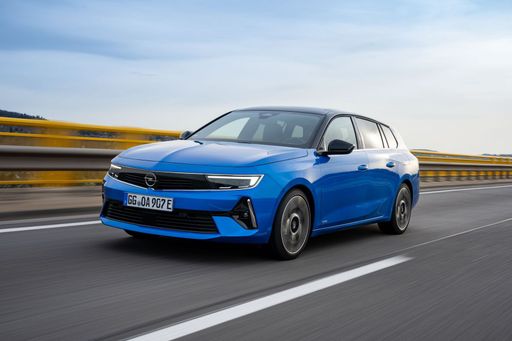 @ Opel / Stellantis Media
@ Opel / Stellantis Media
Vauxhall Astra Sports Tourer
Costs and Consumption
View detailed analysis
Engine and Performance
View detailed analysis
Dimensions and Body
View detailed analysis
Vauxhall Astra Sports Tourer
The Opel Astra Sports Tourer blends family-friendly practicality with a sleek, grown-up wagon silhouette that manages to be both useful and unexpectedly stylish. It’s an easy car to live with — comfortable, well put together and clever with space — a sensible choice for buyers who want everyday versatility without fuss.
details @ Opel / Stellantis Media
@ Opel / Stellantis Media
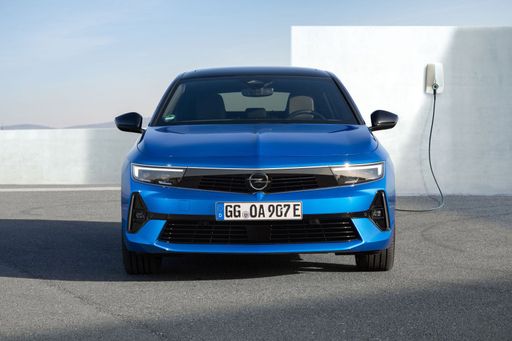 @ Opel / Stellantis Media
@ Opel / Stellantis Media
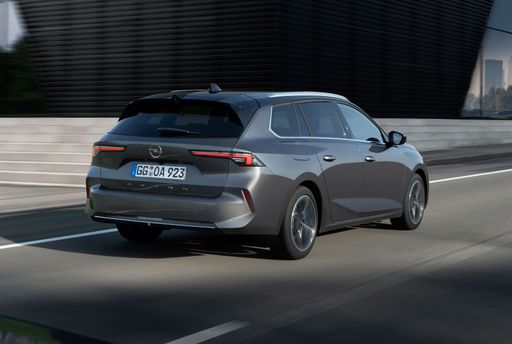 @ Opel / Stellantis Media
@ Opel / Stellantis Media
VW T-Roc
The VW T-Roc mixes cheeky, coupe-like styling with the everyday sense and space of an SUV, so it looks fun without sacrificing family sense. It’s a likeable all-rounder with tidy road manners and plenty of personality, ideal if you want a car that’s practical enough for chores but entertaining enough to enjoy.
details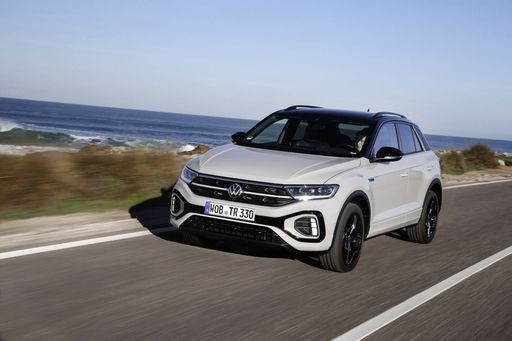 @ Volkswagen AG / VW Media
@ Volkswagen AG / VW Media
 @ Volkswagen AG / VW Media
@ Volkswagen AG / VW Media
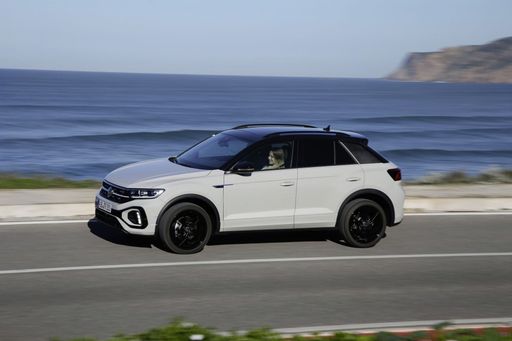 @ Volkswagen AG / VW Media
@ Volkswagen AG / VW Media
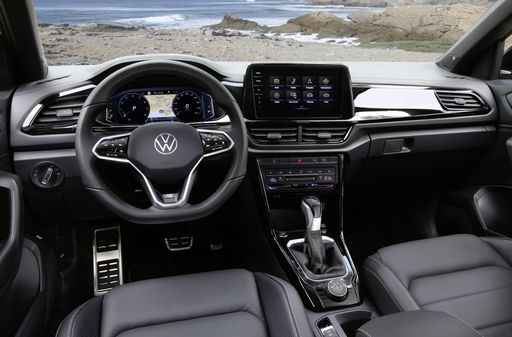 @ Volkswagen AG / VW Media
@ Volkswagen AG / VW Media
 @ Opel / Stellantis Media
@ Opel / Stellantis Media
|
 @ Volkswagen AG / VW Media
@ Volkswagen AG / VW Media
|
|
|
|
Costs and Consumption |
|
|---|---|
|
Price
26500 - 41800 £
|
Price
26400 - 38000 £
|
|
Consumption L/100km
2.3 - 6.1 L
|
Consumption L/100km
5.5 - 6.3 L
|
|
Consumption kWh/100km
15.60 kWh
|
Consumption kWh/100km
-
|
|
Electric Range
81 - 413 km
|
Electric Range
-
|
|
Battery Capacity
51 kWh
|
Battery Capacity
-
|
|
co2
0 - 137 g/km
|
co2
126 - 143 g/km
|
|
Fuel tank capacity
42 - 52 L
|
Fuel tank capacity
50 L
|
Dimensions and Body |
|
|---|---|
|
Body Type
Estate
|
Body Type
SUV
|
|
Seats
5
|
Seats
4 - 5
|
|
Doors
5
|
Doors
2 - 5
|
|
Curb weight
1394 - 1760 kg
|
Curb weight
1465 - 1539 kg
|
|
Trunk capacity
516 - 597 L
|
Trunk capacity
284 - 475 L
|
|
Length
4642 mm
|
Length
4271 - 4373 mm
|
|
Width
1860 mm
|
Width
1811 - 1828 mm
|
|
Height
1443 - 1481 mm
|
Height
1527 - 1573 mm
|
|
Max trunk capacity
1553 - 1634 L
|
Max trunk capacity
1350 L
|
|
Payload
413 - 497 kg
|
Payload
368 - 515 kg
|
Engine and Performance |
|
|---|---|
|
Engine Type
Petrol, Diesel, Electric, Petrol MHEV, Plugin Hybrid
|
Engine Type
Petrol, Petrol MHEV
|
|
Transmission
Manuel, Automatic
|
Transmission
Manuel, Automatic
|
|
Transmission Detail
Manual Gearbox, Automatic Gearbox, Reduction Gearbox, Dual-Clutch Automatic
|
Transmission Detail
Manual Gearbox, Dual-Clutch Automatic
|
|
Drive Type
Front-Wheel Drive
|
Drive Type
Front-Wheel Drive
|
|
Power HP
130 - 225 HP
|
Power HP
115 - 150 HP
|
|
Acceleration 0-100km/h
7.6 - 11 s
|
Acceleration 0-100km/h
8.9 - 12.3 s
|
|
Max Speed
170 - 235 km/h
|
Max Speed
187 - 212 km/h
|
|
Torque
230 - 360 Nm
|
Torque
200 - 250 Nm
|
|
Number of Cylinders
3 - 4
|
Number of Cylinders
3 - 4
|
|
Power kW
96 - 165 kW
|
Power kW
85 - 110 kW
|
|
Engine capacity
1199 - 1598 cm3
|
Engine capacity
999 - 1498 cm3
|
General |
|
|---|---|
|
Model Year
2023 - 2025
|
Model Year
2024 - 2025
|
|
CO2 Efficiency Class
D, E, A, C, B
|
CO2 Efficiency Class
E, D
|
|
Brand
Vauxhall
|
Brand
VW
|
What drive types are available for the Vauxhall Astra Sports Tourer?
Available configurations include Front-Wheel Drive.
The prices and data displayed are estimates based on German list prices and may vary by country. This information is not legally binding.
